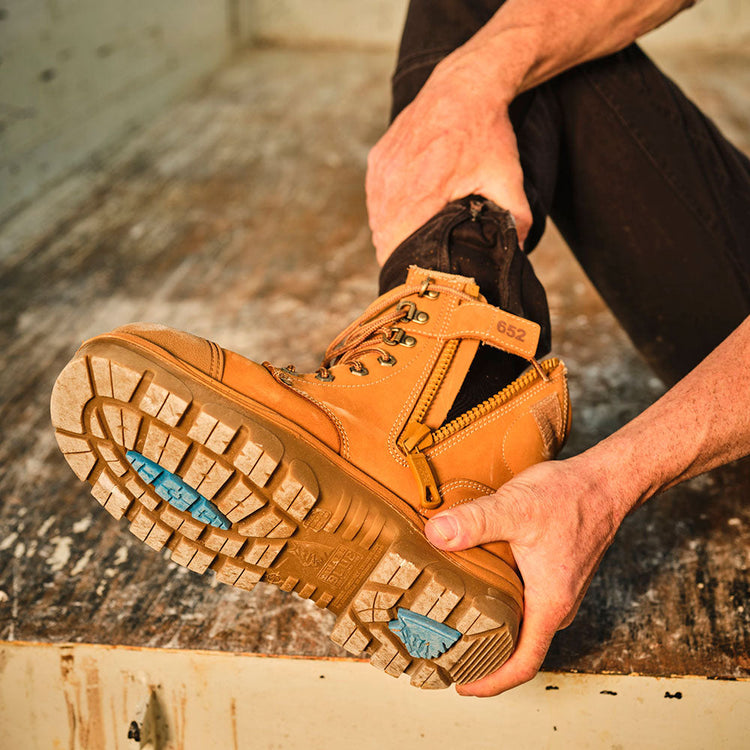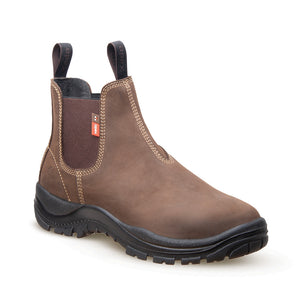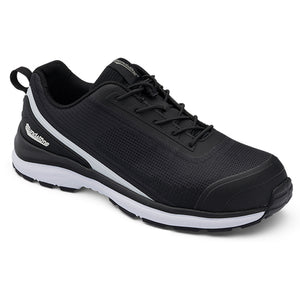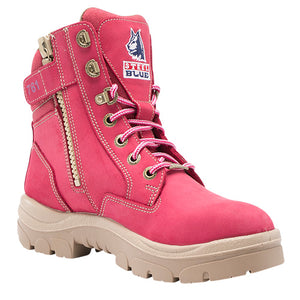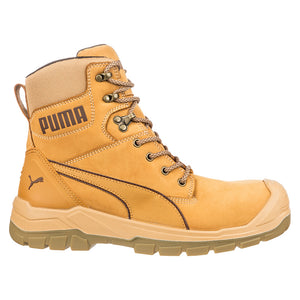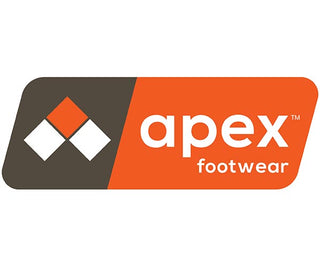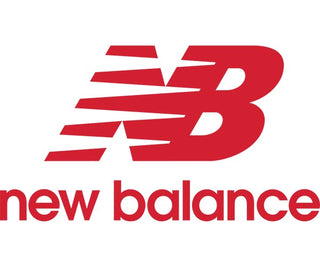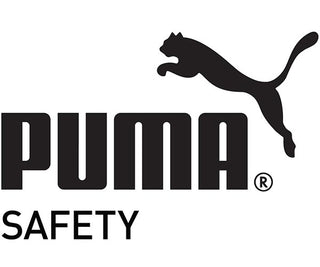What are the best safety boots in NZ?
Are your old work boots tired and worn? Are you starting at a new job that requires safety boots for protection? Or are your current work boots just not doing what you need them to do and it’s time for a change? When it’s time to replace your work boots it’s good to understand what types are going to work best for your application and think about what features are going to be the most important for protection, comfort and fit.
At Active Safety we stock one of the largest and most diverse ranges of safety footwear in NZ. Our expert team are great at helping customers find the right safety boots to fit their needs and budget. We have a wide variety of men’s and women’s styles, available in multiple colours, suiting a wide range of applications from construction to manufacturing.

Read on to find out how to pick the best safety boots for your specific work needs as well as some recommendations from our team.
What type of safety boots do I need?
The type of safety footwear you choose is very important and is a combination of personal preference and intended application. There are three main types of safety footwear available: high leg & ankle lace up boots, slip on & elastic sided boots, and lightweight safety shoes. Let’s take a look at each type and discuss their pros and cons.
High Leg & Ankle Lace Up Safety Boots
In New Zealand, this is by far the most common type of safety work boots used by various industries for foot protection. When laced correctly, high leg and ankle lace up safety boots help to provide superior ankle support when working in loose and uneven terrain, such as a construction site or on a farm. They also offer a little bit more protection against bumps and scratches due to the extra material above the ankle.
One of the downsides to this type of safety boot is that they can often be bothersome to take on and off, which can be problematic for some tradespeople when moving between dirty and clean environments. To overcome this, you can choose a zip-side safety boot or a boot with a BOA lace system, such as the John Bull Oryx 3.0. Both options allow the wearer to easily take their safety boots on and off quickly without compromising ankle support.

Featured: Apex Pearse Waterproof Safety Boot
Slip On & Elastic Sided Safety Boots
A classic safety boot renowned for its simplicity and easy of use is the slip on and elastic sided safety boot. This is a great option for foot protection in a simple and classy silhouette and is one of the easiest types of safety footwear to get on and off quickly. An additional upside is the lack of laces and excess material that could get caught on something or exposed to a flame/spark.
The downside to this type of safety boot is the lack of ankle support compared to a lace up boot, and a lot of construction sites in New Zealand will not allow this type of foot protection to be used on site because of this.

Featured: Steel Blue Hobart Ladies Slip On Safety Boot, Sand
Lightweight Safety Shoes
The newest type of foot protection that has come to market is the lightweight safety shoe. This is a fantastic option for people working in warehousing or manufacturing environments where additional ankle support isn’t necessary or you are having to kneel a lot. Courier and truck drivers can also benefit from this type of safety shoe as they can minimise any heel or ankle rubbing when using pedals. Being one of the lightest options for safety footwear, the safety shoe can help to reduce fatigue when worn standing for long periods of time and blends in well with casual work attire similar to a sneaker.
As with the slip on and elastic sided safety boot, you may be unable to wear the lightweight safety shoe in certain situations where safety footwear with ankle support is a requirement.

Featured: New Balance Logic Safety Shoe, Grey/Lime
To summarise, we recommend high leg & ankle lace up boots when extra ankle support is needed for industries such as construction, landscaping, and forestry. If you’re working on flat surfaces or kneeling a lot, consider a lightweight safety shoe for industries such as warehousing, manufacturing, courier/truck driving and roofing. And if you want something easy to wear, simple, and timeless – consider the slip-on and elastic sided safety boot.
What features do I need for my safety footwear?
Arguably the most important aspect to consider when buying a new pair of safety boots or safety shoes are the features on offer. You might want to buy a pair of safety boots with a large number of features and call it a day, but you will probably find that you’re overpaying for features you don’t need and potentially missing out on the key ones that you do.
Safety footwear features can be split into two types: risk-mitigation and user-centric. Risk-mitigation features will help to reduce the risk of wearer injury, while user-centric features help to aid in comfort and usability. Continue reading below to learn about the most common features among both types to keep you informed on what to look out for.
Risk-mitigation features:
Toe cap protection
Designed to protect your toes from heavy objects and impacts, the safety toe cap is typically made from steel or a composite material such as fibreglass. Both materials have their own benefits and must comply with the AS/NZS 2210.3 safety standards in New Zealand and Australia, needing to meet a minimum drop force rating of 200J and a rolling force of 15kN. A steel toe cap offers puncture and cut-resistant properties over composite toe caps, so is a great choice when working with hazardous machinery or tools such as power saws and nail guns. A composite toe cap is non-conductive, lightweight, airport friendly, and offers better insulation properties when working in colder weather. Generally, the composite toe is seen as more of a premium option unless you require a steel toe cap for cut or puncture resistance.
Penetration resistant sole
When working in environments where there could be sharp objects underfoot such as nails, a puncture resistant sole is important to consider. The puncture resistant sole is designed to prevent sharp objects from piercing the sole of your boot by including a steel or anti-penetration material (such as Kevlar) in the sole of your safety boot. A steel midsole is great for its strength and low cost, while anti-penetration materials provide metal-free protection with superior insulation and lightweight feel.
Electrical hazard resistance
Safety boots with electrical hazard (EH) protection will be labelled to meet the American standard: ASTM F 2413 – EH. Not to be confused with anti-static safety footwear, EH protection is typically required when working in high voltage environments and used in conjunction with primary electrical hazard PPE. This non-conductive safety footwear helps to reduce the risk of accidental electrical shock. A great example of this type of boot would be the Steel Blue Torquay, a 100% metal free non-conductive safety boot.
Anti-static
Safety boots with anti-static properties are designed to dissipate static build-up to prevent accidental ignition of flammable liquids and gases. An anti-static boot cannot provide electrical hazard resistance, in the same way an electrical hazard boot cannot provide anti-static properties, so ensure you evaluate your requirements carefully before deciding on which will work for your needs.
Sole material
We mostly sell safety boots with one of two different sole types: Nitrile Rubber and TPU (thermoplastic urethane). The Nitrile Rubber sole is seen as the more premium option, providing a 300°C resistance to heat and great slip, abrasion and chemical resistant properties. The TPU sole is generally more lightweight than Nitrile Rubber but only offers a 130°C resistance to heat. With a TPU sole you will still get a durable, slip resistant sole that offers good resistance to most oils and chemicals, so if you don’t need the additional heat resistance of a Nitrile Rubber sole it could be worth looking at a safety boot with a TPU sole instead.
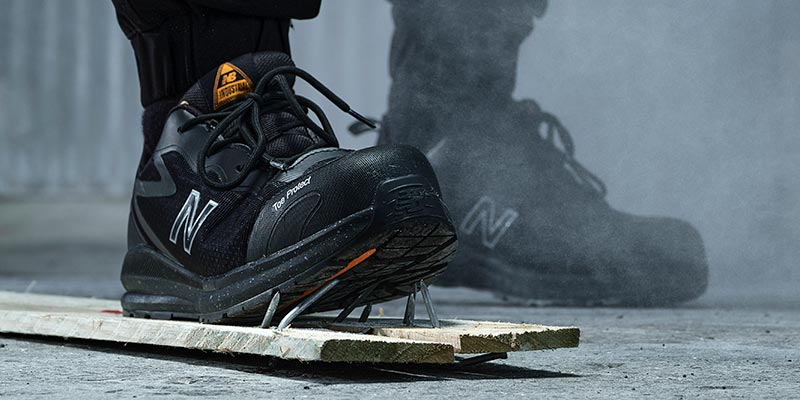
Featured: New Balance Logic Safety Shoe, Black/Orange with a Kevlar anti-penetration midsole
User-centric features:
Zip-side access
Quickly becoming some of our most popular styles, zip-side safety boots allow the wearer to easily get their boots on and off quickly without having to undo laces and helps to maintain a consistent, secure fit. Always ensure that you fully do the zip up when wearing your boots, as not doing so could damage the zip and not provide a secure fit.
Waterproof membranes
Another increasingly popular feature amongst work boots, the waterproof membrane stops water from entering the boot and ensures your feet will stay completely dry when working in wet conditions. This is a great feature to have in the winter months when water entering your boots could become more than a nuisance. Click here to view our range of waterproof work boots.
Scuff/bump caps
This is a useful feature to increase the durability of your safety boots by adding a protective layer or cap on the outer toe area. Perfect for those who kneel frequently or often have abrasive materials rubbing against the toe area, the scuff/bump cap will prevent excess wear on the toe area.
Metal free/airport friendly
A metal free boot or shoe will include a composite toe cap and will be completely free of metallic eyelets, aglets and zips. Often referred to as ‘airport friendly’ safety boots as they will not trigger metal detectors when passing through security areas.
Materials
The material of your new boots will usually be influenced by the environment you plan to wear them in. Traditionally, most safety boots are made of natural and synthetic leathers which offers good abrasion resistance and durability at the cost of a lack of breathability. As safety footwear has evolved, we’re now seeing synthetic fabrics such as canvas and mesh which provide greater breathability while still offering a decent amount of durability for various working environments. There’s never been a greater amount of choice between materials, colours, and styles, so think carefully about what will work best for your situation.

Featured: Puma Conquest Zip Safety Boot, Wheat with a 100% waterproof membrane
What are the most comfortable safety boots?
While some brands are quite well known for their comfort, safety boot comfort can be quite subjective and will ultimately come down to individual preference. Our feet come in many different shapes and sizes and there is no single boot or brand that is going to work well for everyone. We make sure to offer a wide range of brands to ensure you can find the right fit, no matter your requirements.

Did you know? Steel Blue backs their boots with a 30-day comfort guarantee
Many of our brands also have unique propositions as well, like Apex Footwear who design their safety boots for people with wider feet who need extra room for comfort; Grisport safety boots come with a hard and soft innersole included to tailor the underfoot feel; and New Balance safety shoes incorporate comfort technology found in their premium sports sneakers.
Take into consideration what comfort features you value the most such as breathability, being lightweight, extra padding, or having a wide fit, and refer to the sizing guide against each style to determine the correct fit. Our expert team are also here to help by phone, live chat, or email should you need extra help. Or better yet, visit one of stores and choose from a massive range of safety boots, shoes and gumboots and receive in-person assistance from the team.


Top Brands

Try in store
Find your next pair of work boots in store at any of our locations and choose from a huge range of options catering to all industries and work types.

